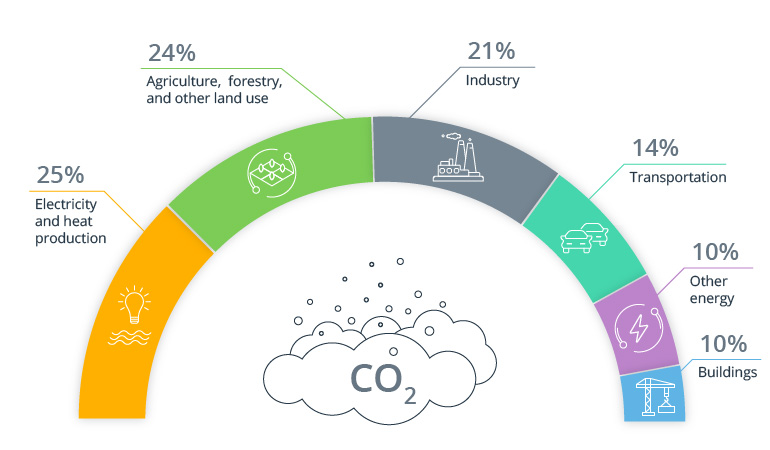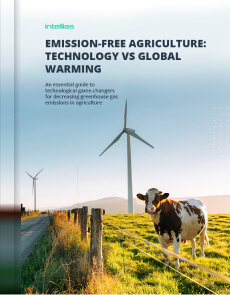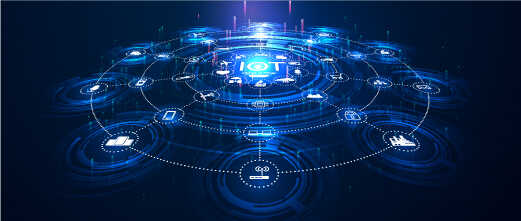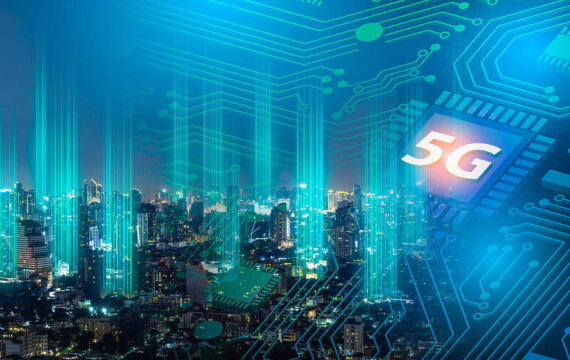We all know how the Internet of Things (IoT), artificial intelligence (AI), and big data help reshape industries and lift businesses to a new level. Now it’s time to think of ways they can contribute to developing more sustainable future and environmental solutions.
Leveraging such groundbreaking technologies as IoT big data can help us use natural resources more efficiently, reduce our carbon footprint, advance agricultural practices, and protect wildlife. Read on to learn how we can take advantage of sustainable AI and IoT big data in boosting our efforts to save the earth.
Using AI and IoT in renewable energy
Since all major means of generating electricity have a tremendous impact on the quality of water, air, and soil, our primary task should be to produce cleaner electricity and consume it more efficiently. If we aim to prevent drastic climate change, we have to switch to renewable energy sources: geothermal, solar, and wind.
One thing we can do is leverage IoT and AI to produce clean energy. Namely, these technologies can help us achieve:
- Energy production using renewable resources
- Energy efficiency
- Efficient combined heat and power generation
The use of artificial intelligence in renewable energy can optimize energy production and consumption. AI-powered predictive analysis improves the efficiency of renewable energy sources by forecasting weather patterns and energy demands.
AI algorithms for efficient energy production
Machine learning models enable smarter grid management and energy storage. The technology can predict renewable energy output, such as solar irradiance and wind speed, to optimize energy generation and distribution. Additionally, deep learning and reinforcement learning advance demand response, adjusting energy supply from renewables in real-time based on consumption patterns and storage capacities, thereby maximizing efficiency and reducing waste.
AI for predictive maintenance of renewable energy assets
It’s critical to collect and analyze data from sensors installed on equipment like wind turbines and solar panels. Based on this data, machine learning algorithms can then identify patterns or anomalies indicative of potential failures or decreased efficiency. This allows for timely maintenance or component replacement, reducing downtime and extending the lifespan of assets.
AI in renewable energy for optimizing energy storage and distribution
AI helps to analyze historical and real-time data on energy production, consumption, and weather conditions. This enables the intelligent charging and discharging of energy storage systems to meet demand without overloading the grid. AI also facilitates the dynamic distribution of energy, ensuring that renewable resources are efficiently integrated into the power grid.
Here are some examples of how we can apply IoT and AI in energy.
Smart grids to reduce our carbon footprint
Even though the percentage of power generated by renewable resources is growing in the US, most energy is still generated using coal and fossil fuels.
Total electric power quarterly in USA

Source: Eia
This is why we should be looking for the best ways to use IoT and AI to reduce carbon footprint while generating electricity. Using smart grids is one solution.
Smart grids differ from regular electrical grids in their use of sensors and smart appliances to control the production and distribution of electricity. They can help energy providers better understand power usage and quickly make necessary adjustments. At the same time, smart grids provide consumers with data-based suggestions for using electricity smarter.
Smart grids can change the way electricity is produced and distributed by reducing the amount of electricity wasted during transmission. If we manage to apply IoT and AI appropriately, it will also help us improve the energy delivery process, reduce our dependence on fossil fuels, and make real-time adjustments for efficiency.
[AI] will continuously collect and synthesize overwhelming amounts of data from millions of smart sensors nationwide to make timely decisions on how to best allocate energy resources. Additionally, the advances made from ‘deep learning’ algorithms, a system where machines learn on their own from spotting patterns and anomalies in large data sets, will revolutionize both the demand and supply side of the energy economy.
There are currently more than 50 million smart meters installed across the US. Although they’re helping people reduce electricity usage, it’s still not enough to reach the desired energy-saving goals. We need real-time energy consumption data. And that’s where technology comes into play.
AI is the driving force behind smart grids, changing the way we manage and use energy.
When it comes to AI and carbon footprint, we know the technology can help us make a pivotal step towards a greener future. Through its capability for real-time demand response, the technology dynamically adjusts the energy supply based on immediate consumption patterns. Striking the right balance between supply and demand, AI minimizes energy wastage and enhances grid stability.
Machine learning algorithms predict future energy needs. Historical data helps to increase accuracy of our predictions, allowing for more efficient grid operation and resource allocation.
AI can also forecast potential failures or inefficiencies within the grid system before they occur. This proactive approach prevents costly downtimes and extends the lifespan of infrastructure, contributing to a more resilient and efficient energy system.
Smart meters to change our energy habits
According to a study by the University of California Davis, customers can cut energy use by 11–14% when they get real-time pricing alerts.
People usually have meters that show them how many kilowatt-hours of electricity they use per month, so it’s not hard to calculate how much you’ll spend on electricity even before the bill comes. But what if you could have an in-home display that would show you how much energy you’re using every single minute, and, what’s more, how much you’re paying for that? Perhaps that would make you consider unplugging some appliances or switching off unnecessary lights to save some money (and resources).
Using big data, IoT, and AI for energy optimization can help people change their power consumption habits. If more people get used to paying attention to the cost of electricity and reducing its consumption, we’re sure to consume (and, hence, produce) less of it.
We shouldn’t underestimate the role of artificial intelligence in analyzing energy usage data and optimizing energy efficiency.
- Data analysis
AI algorithms can analyze massive amounts of energy data in real-time to identify patterns, anomalies, and optimization opportunities. With the correct data interpretation, facility managers can make data-driven decisions and implement energy-saving measures more effectively.
- Automated energy management
AI-powered energy optimization and management systems can automatically adjust heating, cooling, and lighting based on occupancy, weather conditions, and energy demand. This ensures optimal energy usage without compromising occupant comfort.
- Optimized energy distribution
AI algorithms can analyze energy demands and supply trends to optimize the distribution of energy across buildings and industrial facilities. By reducing energy wastage, AI helps balance the load and potentially saves costs.
Leveraging IoT and data for cleaner air
When it comes to air pollution, the statistics are terrifying. According to a report by the WHO, 97% of cities in developing countries aren’t even close to meeting air quality guidelines. This is something we can’t ignore. Air pollution is responsible for a large carbon footprint and various respiratory diseases.
With the help of IoT and AI, we can create tools to dynamically monitor pollution, identify its sources, and prevent hazardous situations. For instance, smart sensors can notify employees about poor air quality levels and alert them about technical problems like gas leaks.
Another way IoT and AI can help the planet is by helping us reduce vehicle emissions. Let’s not forget that the transportation sector is responsible for 14% of greenhouse emissions.

In the future, manufacturers of autonomous cars will use IoT and AI to make them more fuel-efficient. Some cities have already started taking advantage of AI to manage traffic lights and better control traffic flows. For instance, Surtrac smart traffic light software has helped to reduce travel times by 25%, braking by 30%, and idling by 40%.
The amount of data we have at our disposal today is huge. By using AI to analyze data from satellites, sensors, and other sources, we’ll get real-time information on environmental conditions like air quality, water quality, and temperature. This information can then be used to track the progress of environmental initiatives, identify areas that need improvement, and inform policy decisions.
Real-time air quality monitoring provides immediate insights into pollution levels across different areas. For example, the European Space Agency is using AI to analyze satellite data to monitor air pollution levels in cities. Continuous monitoring helps in identifying hotspots and taking timely action.
By analyzing historical data as well, we may predict future emissions and take proactive measures to mitigate pollution before it escalates. Moreover, AI’s application helps to optimize transportation routes. By analyzing traffic patterns and vehicle types, AI can suggest the most efficient routes, minimizing fuel consumption and reducing the transportation carbon footprint.
Applying IoT and AI for agricultural sustainability
As the world’s population continues to grow by an average of 82 million people per year and climate change worsens (18 out of the 19 warmest years on record have occurred since 2001), it becomes harder to grow food without using pesticides and polluting the environment.
But we can use IoT devices to monitor crops and increase yields. Farmers will be able to use historical data to predict weather conditions more accurately for their specific microclimates and get suggestions on how to grow crops better.
AI and IoT will change the way agricultural methods work. Microsoft’s Airband Initiative and the FarmBeats program are helping farmers make more environmentally sustainable decisions.
The Airband Initiative provides rural communities in Colombia, India, Kenya, South Africa, and the US with affordable high-speed internet to help them stay connected. FarmBeats provides low-cost drones and smart sensors that gather data to give farmers real-time updates about their crops’ hydration, nutrition, and health. This helps them spot anomalies and resolve them quickly.
Once agricultural workers have access to data that shows them the best irrigation cycles and which crops have a higher nutritional value, they’ll start using fewer pesticides.
Data-driven technologies to help protect wildlife
Sadly, more species are going extinct every year. It’s a horrifying problem for the biodiversity of our planet. Data-driven technologies like IoT and AI can help us study animals’ behavioral patterns and monitor animals without disrupting them.
Rhino poaching in South Africa has increased from 13 rhinos poached in 2007 to 1,004 poached in 2013. If we do nothing, the number of rhinos will plummet to zero. Some governments have already started to protect endangered wildlife with the help of IoT and AI.

Source: Allerin
With the right data, our chances of saving wildlife are higher. A combination of advanced visualization techniques and AI can help us spot animals in photos and study their movements.
IoT approaches that can help us protect endangered species include using sensor-equipped collars to monitor the behaviors and movements of animals and recognize the types of threats they’re facing.
Final thoughts on AI and sustainability
Thanks to IoT, AI, and data science, we can understand how to use renewable energy resources to reduce greenhouse emissions. We already see the advantages of big data in climate change — the technology helps to slow it down and preserve life on our planet.
AI and IoT can also help farmers apply more sustainable agricultural methods to grow more crops without endangering the environment. Apart from that, these technologies can contribute to stopping poaching and protecting wildlife. Big data, IoT, and AI have become valuable tools we should strongly consider if we’re serious about saving the planet and improving our quality of life.



